Kia Niro vs SsangYong Korando – Which one offers the better deal?
Both models have their strengths – but which one suits you more?
Compare performance, efficiency, price and space directly: Kia Niro or SsangYong Korando?
Here’s where it gets real: The technical differences in detail
Costs and Efficiency: Price and efficiency are often the first things buyers look at. Here it becomes clear which model has the long-term edge – whether at the pump, the plug, or in purchase price.
SsangYong Korando has a hardly perceptible advantage in terms of price – it starts at 27000 £, while the Kia Niro costs 29100 £. That’s a price difference of around 2143 £.
Fuel consumption also shows a difference: the Kia Niro manages with 2.40 L and is therefore decisively more efficient than the SsangYong Korando with 7.50 L. The difference is about 5.10 L per 100 km.
As for range, the SsangYong Korando performs clearly better – achieving up to 339 km, about 277 km more than the Kia Niro.
Engine and Performance: Power, torque and acceleration are the classic benchmarks for car enthusiasts – and here, some clear differences start to show.
When it comes to engine power, the SsangYong Korando has a barely noticeable edge – offering 190 HP compared to 180 HP. That’s roughly 10 HP more horsepower.
In acceleration from 0 to 100 km/h, the SsangYong Korando is somewhat quicker – completing the sprint in 8.40 s, while the Kia Niro takes 9.90 s. That’s about 1.50 s faster.
In terms of top speed, the SsangYong Korando performs barely noticeable better – reaching 191 km/h, while the Kia Niro tops out at 185 km/h. The difference is around 6 km/h.
There’s also a difference in torque: the SsangYong Korando pulls distinct stronger with 360 Nm compared to 265 Nm. That’s about 95 Nm difference.
Space and Everyday Use: Whether family car or daily driver – which one offers more room, flexibility and comfort?
Both vehicles offer seating for 5 people.
In curb weight, the Kia Niro is barely noticeable lighter – 1474 kg compared to 1517 kg. The difference is around 43 kg.
In terms of boot space, the SsangYong Korando offers slightly more room – 551 L compared to 451 L. That’s a difference of about 100 L.
In maximum load capacity, the Kia Niro performs somewhat better – up to 1445 L, which is about 197 L more than the SsangYong Korando.
When it comes to payload, Kia Niro hardly perceptible takes the win – 466 kg compared to 463 kg. That’s a difference of about 3 kg.
All in all, the Kia Niro shows itself to be secures victory with a clear margin and secures the title of DriveDuel Champion.
It impresses with the more balanced overall package and proves to be the more versatile companion for everyday use.
Kia Niro
The Kia Niro presents itself as a versatile and eco-friendly SUV, blending a stylish design with advanced hybrid technology. Its spacious interior offers comfort and practicality, making it ideal for both city driving and longer journeys. With a focus on efficiency and sustainability, the Niro is a compelling choice for environmentally conscious drivers.
details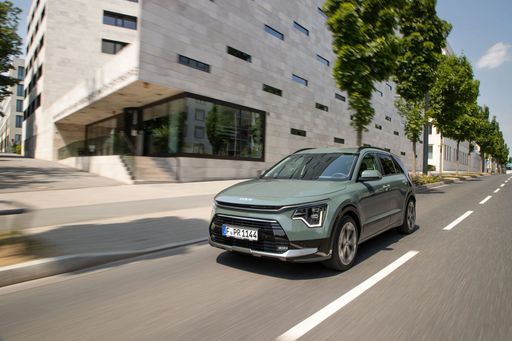 @ press.kia.com
@ press.kia.com
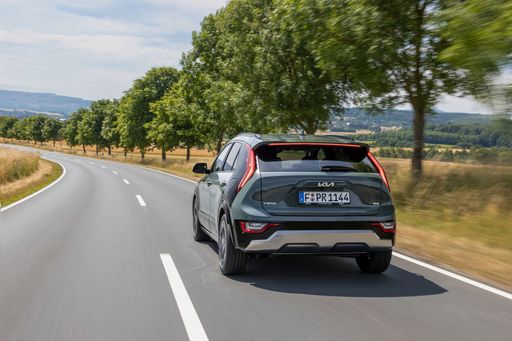 @ press.kia.com
@ press.kia.com
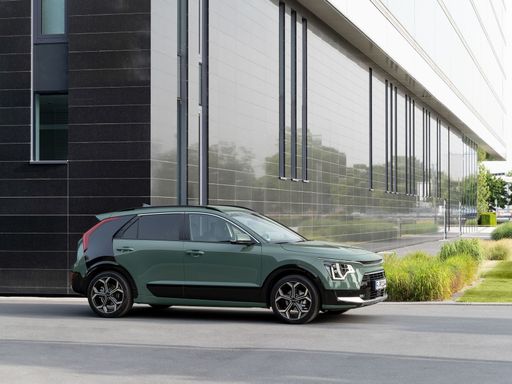 @ press.kia.com
@ press.kia.com
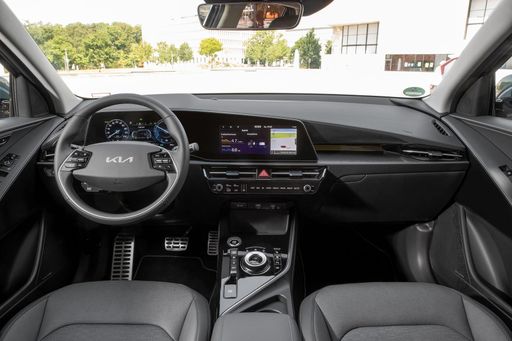 @ press.kia.com
@ press.kia.com
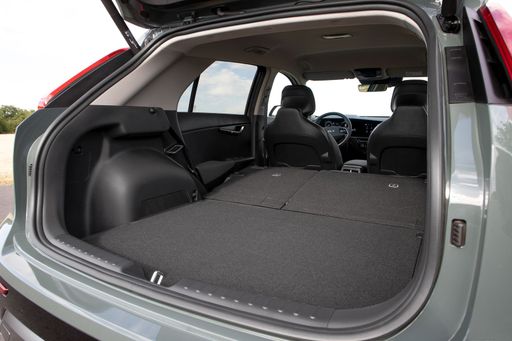 @ press.kia.com
@ press.kia.com
SsangYong Korando
The SsangYong Korando offers a blend of contemporary design and practicality, making it an appealing choice for urban adventurers. Its spacious interior and comfortable seating ensure a pleasant driving experience for both driver and passengers. With its reliable performance and advanced features, the Korando stands out in the competitive SUV market.
details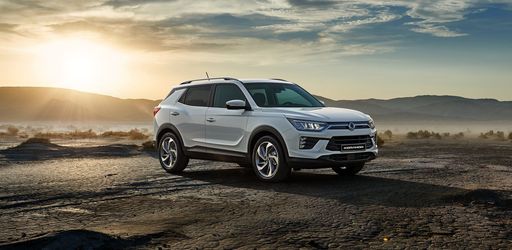 @ Ssangyong
@ Ssangyong
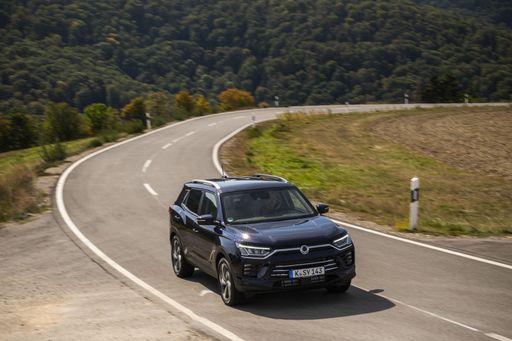 @ Ssangyong
@ Ssangyong
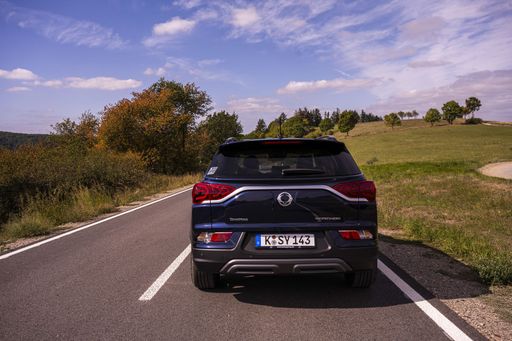 @ Ssangyong
@ Ssangyong
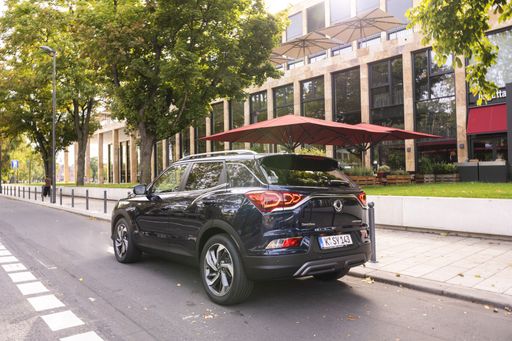 @ Ssangyong
@ Ssangyong
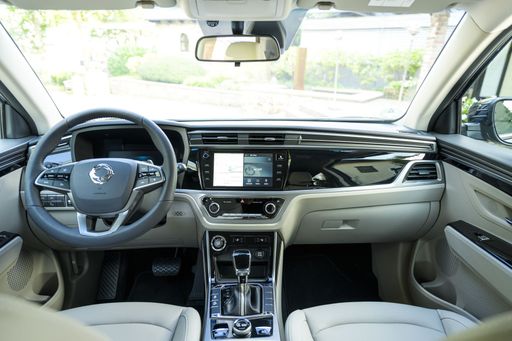 @ Ssangyong
@ Ssangyong

|

|
|
|
|
Costs and Consumption |
|
|---|---|
|
Price
29100 - 38600 £
|
Price
27000 - 42000 £
|
|
Consumption L/100km
2.4 - 4.9 L
|
Consumption L/100km
7.5 - 8.6 L
|
|
Consumption kWh/100km
-
|
Consumption kWh/100km
16.80 kWh
|
|
Electric Range
57 - 62 km
|
Electric Range
339 km
|
|
Battery Capacity
1.3 - 11.1 kWh
|
Battery Capacity
-
|
|
co2
53 - 111 g/km
|
co2
0 - 197 g/km
|
|
Fuel tank capacity
37 - 42 L
|
Fuel tank capacity
50 L
|
Dimensions and Body |
|
|---|---|
|
Body Type
SUV
|
Body Type
SUV
|
|
Seats
5
|
Seats
5
|
|
Doors
5
|
Doors
5
|
|
Curb weight
1474 - 1594 kg
|
Curb weight
1517 - 1840 kg
|
|
Trunk capacity
348 - 451 L
|
Trunk capacity
551 L
|
|
Length
4420 mm
|
Length
4450 - 4465 mm
|
|
Width
1825 mm
|
Width
1870 mm
|
|
Height
1545 mm
|
Height
1620 - 1645 mm
|
|
Max trunk capacity
1342 - 1445 L
|
Max trunk capacity
1248 L
|
|
Payload
466 kg
|
Payload
410 - 463 kg
|
Engine and Performance |
|
|---|---|
|
Engine Type
Full Hybrid, Plugin Hybrid
|
Engine Type
Petrol, Electric
|
|
Transmission
Automatic
|
Transmission
Manuel, Automatic
|
|
Transmission Detail
Dual-Clutch Automatic
|
Transmission Detail
Manual Gearbox, Automatic Gearbox, Reduction Gearbox
|
|
Drive Type
Front-Wheel Drive
|
Drive Type
Front-Wheel Drive, All-Wheel Drive
|
|
Power HP
138 - 180 HP
|
Power HP
163 - 190 HP
|
|
Acceleration 0-100km/h
9.9 - 11.4 s
|
Acceleration 0-100km/h
8.40 s
|
|
Max Speed
170 - 185 km/h
|
Max Speed
156 - 191 km/h
|
|
Torque
265 Nm
|
Torque
260 - 360 Nm
|
|
Number of Cylinders
4
|
Number of Cylinders
4
|
|
Power kW
102 - 132 kW
|
Power kW
120 - 140 kW
|
|
Engine capacity
1580 cm3
|
Engine capacity
1497 cm3
|
General |
|
|---|---|
|
Model Year
2025
|
Model Year
2021 - 2023
|
|
CO2 Efficiency Class
C, B
|
CO2 Efficiency Class
F, G, A
|
|
Brand
Kia
|
Brand
SsangYong
|
Is the Kia Niro offered with different drivetrains?
The Kia Niro is available as Front-Wheel Drive.
The prices and data displayed are estimates based on German list prices and may vary by country. This information is not legally binding.
